Bugs and other insects are frequent guests in our homes, especially during the summer season. However, it is not always possible to figure out whether they are safe or not, especially if you are not very knowledgeable about insects.
Also see small black bugs with often look like ticks in the house often and want to know what they are and whether you should worry about them? If yes, then this article will be very useful for you. Below you will find a description of the most frequently seen black small bugs that dwell in our houses.
Black Carpet Beetles
These pests have a rounded build of their bodies that is somewhat similar to the one ladybugs have. An adult carpet beetle is normally an eighth of an inch in size. Also, grown-up individuals have a significant of white, yellow, and brown color on their wing covers.
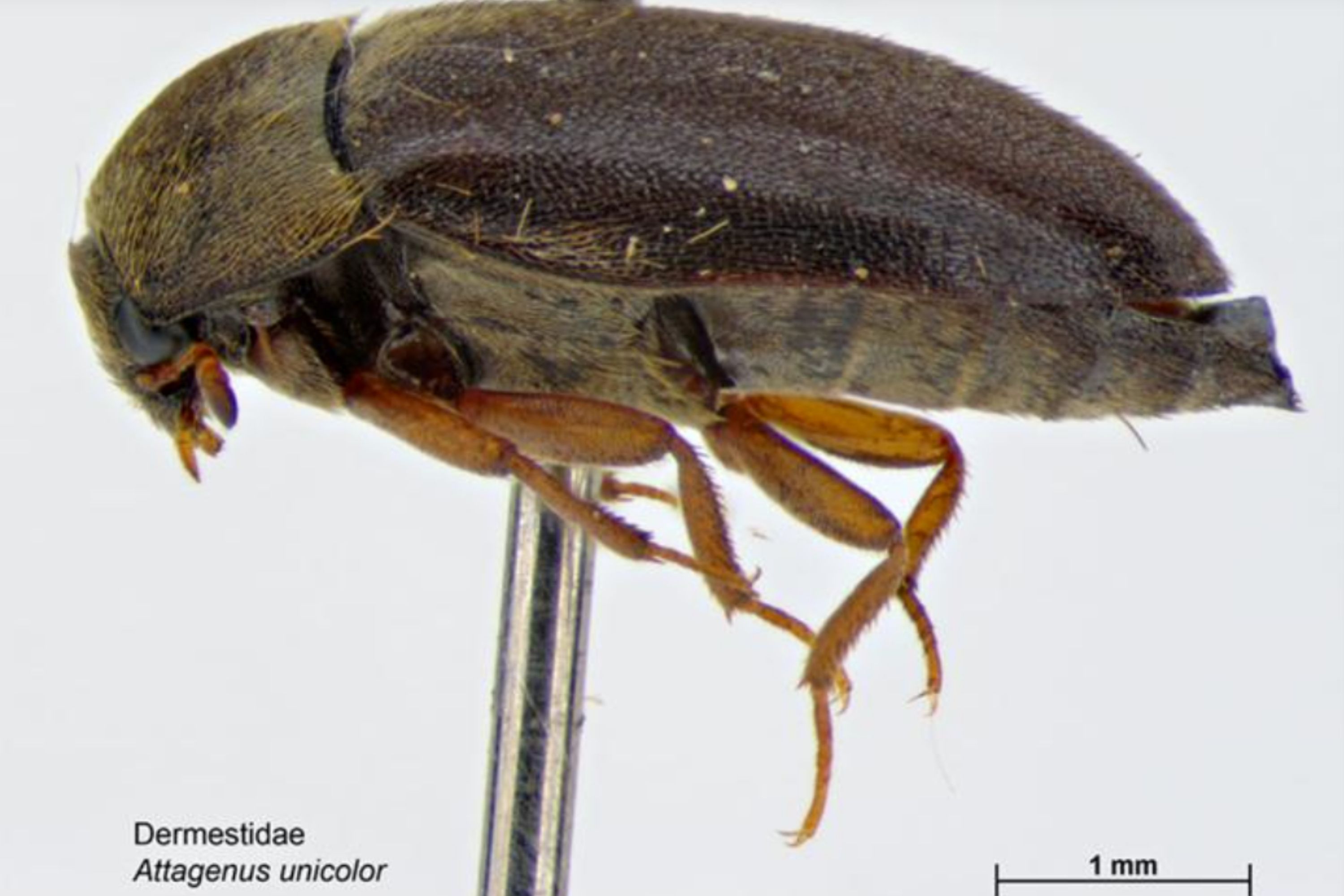
Bed Bugs
These are considered to be quite irritating and nasty pests since bed bugs invade our bedrooms and they bite. The one tricky nuance about this kind of pest is that a bed bug may look differently.
It mostly hangs upon the stage of its development. For instance, bed bugs can be flat if that is an adult individual. But they can also be wide, wingless, and their size may vary. Grown-up insects may reach half a centimeter in length! Often people think that bleach can kill bed bugs but you should be careful.
However, this is not all. Bed bugs commonly have two distinct types of coloring. They can be either black or brown. This is why it can sometimes be pretty challenging to define them.

Grain Insects
They are very small in size, but they are also highly destructive. Since grain insects feed on grains and flour that were brought from a store, they can easily “arrive‘ to your home and keep on spreading to feed on other foods of yours.
Naturally, it will lower the quality of food and products you store. And since there are seven different types of this pest that exist, you’d better take action and destroy them before they will invade your home.
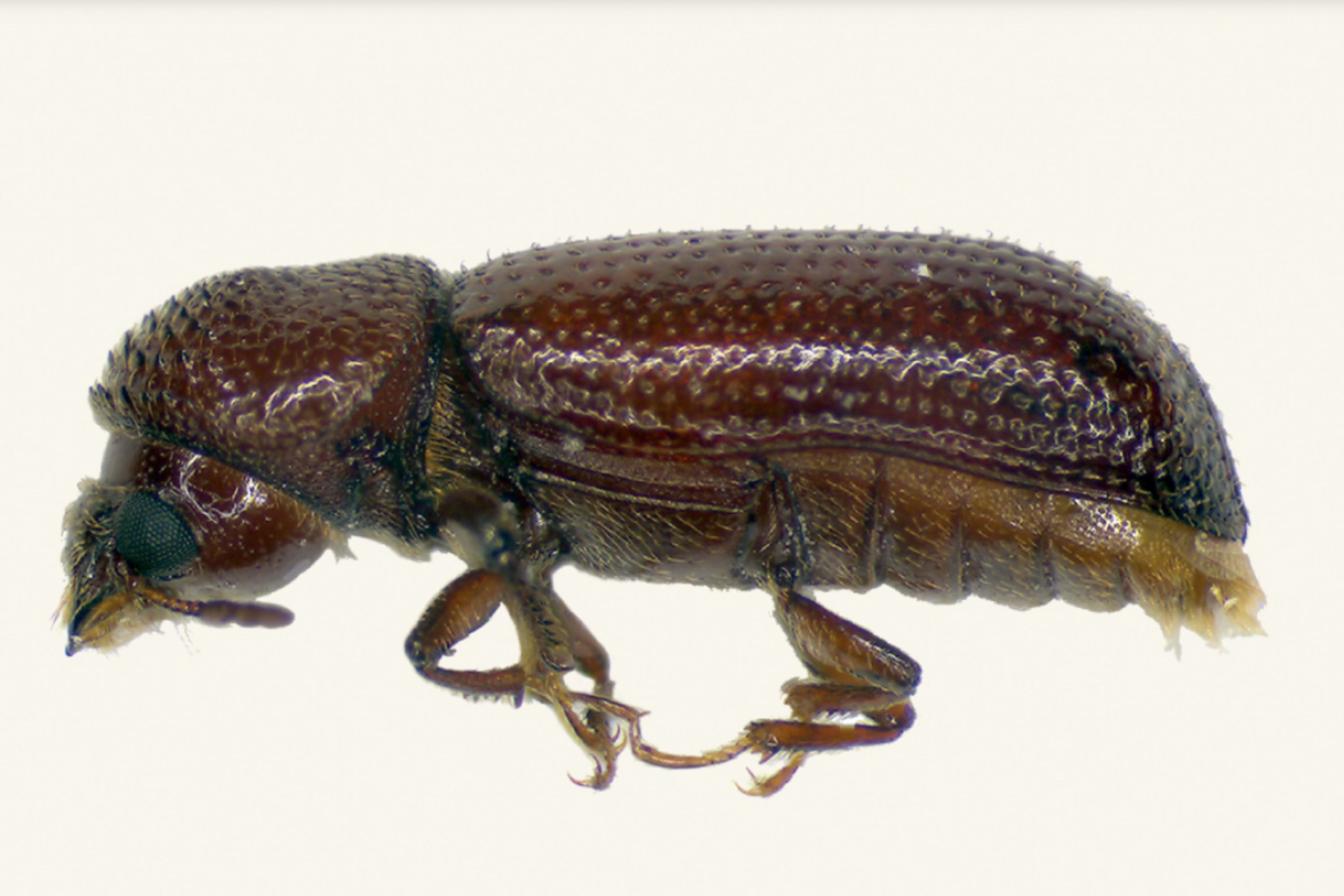
Fleas
Everyone knows fleas! These pests are commonly found on our pets’ fur which makes them a true hazard for our homes. How do you know that the pests you are dealing with are actually fleas?
Well, fleas are small, black, and narrow. Also, fleas jump and they have no wings. If you could take a closer look at a flea, you would see that its body is covered with multiple bristles. But perhaps, it is even better that you can’t do that!

Pill Bugs
Generally speaking, pill bugs are pretty harmless for people. They feed on decaying house plants and veggies and they are active at night. So you will hardly be disturbed by them during the day.
To define them, remember that they are small (a quarter to ⅝ inch long), black, with seven pairs of legs, and have their exoskeleton of seven individual plates.
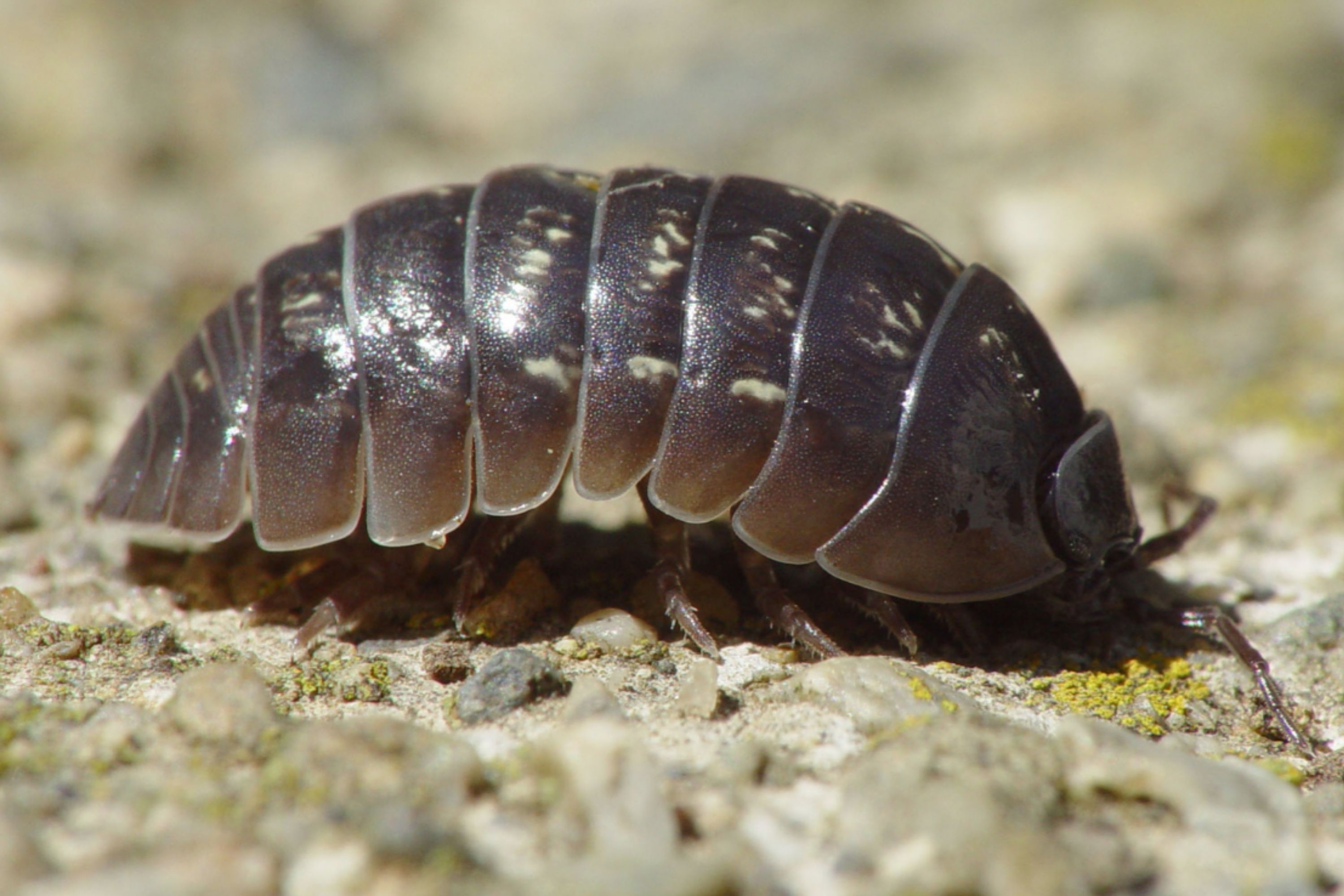
Centipedes
These are often the reason why we shudder since centipedes are one of the creepiest creatures that can infest our home. They are mostly found in a house’s walls and floors, but in fact, they are rather useful!
Centipedes destroy other pests, such as flies, termites, silverfish, and moths. They even help us to get rid of cockroaches! So maybe you should not cast them away unless they get really annoying.

Scabies mites
Don’t even try to see them with the naked eye! No matter how you try, scabies mites are impossible to spot since they are microscopic. And what is even worse, they are not those bugs that will leave on their own.
If you happen to have your home being invaded with these tiny critters, any attempts to cast them away will be pointless. The only way you can get rid of them once and for all is to make use of a professional fumigation. And even after such a massive attack on these pests, you will have to vacuum and steam-treat all the carpets and couches in your house to delete the dead pests!
If it so happens that the eggs of these mites ended up in your skin, rush to the doctor to get proper anti-parasitic medication treatment!

Carpenter ants
How is it possible to differ these ants from dozens if not hundreds of other species of them, you may wonder? Well, in fact, it is pretty simple. Carpenter ants are pretty big with their normal adult size being between half an inch to an inch long.
Also, they have a recognizable black-and-red color, and what is even more important when spotting them, they have wings! Another feature thanks to which you can recognize them is their thorax, that is the area behind the ant’s head. Carpenter ants’ thorax is very rounded unlike the other ants we know.
These ants usually invade our homes from the late summer till early autumn to nest, so this nuance can also be used as an additional way of recognizing them.
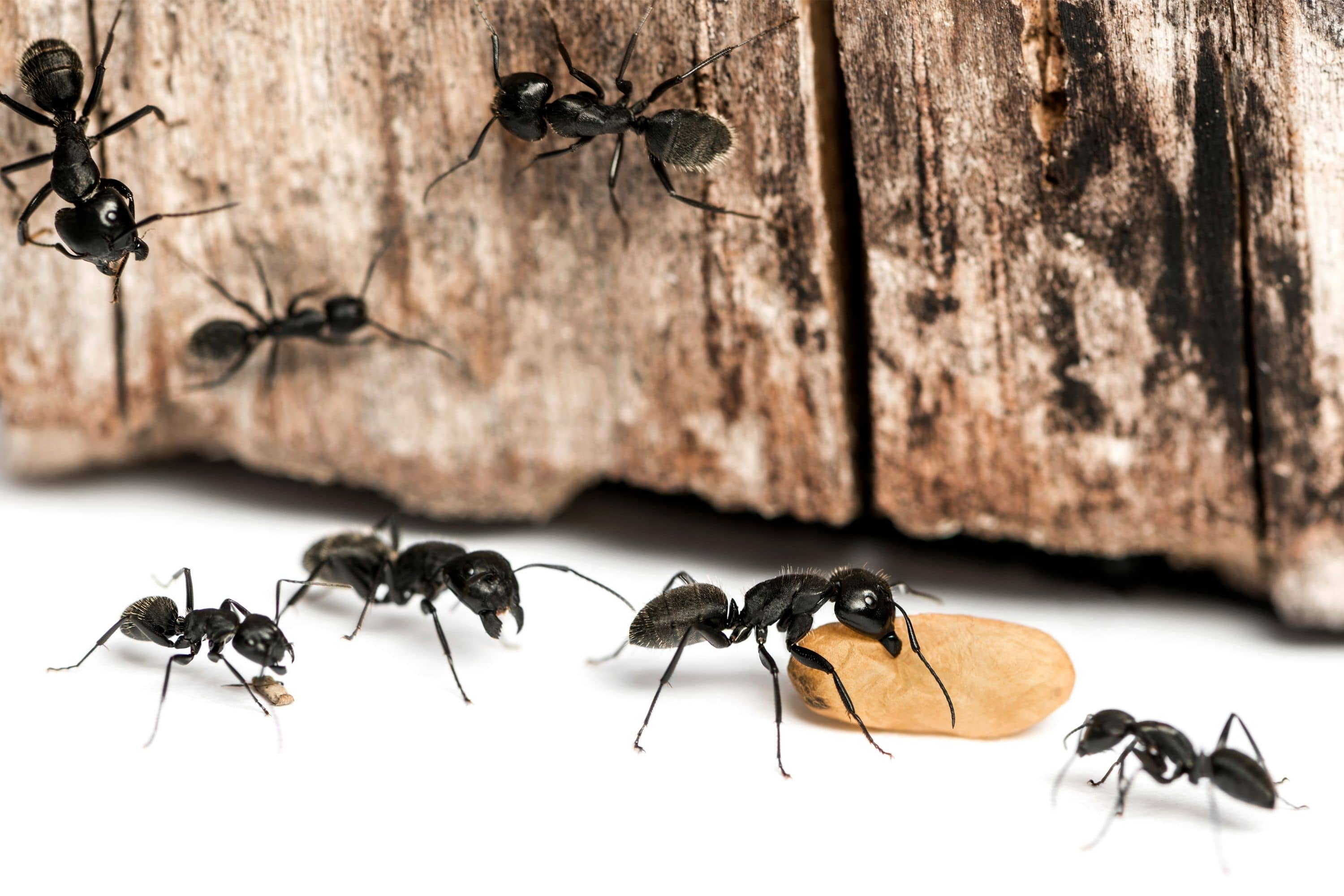
Fruit flies
Oh, those are extremely annoying ones! The second you cut an apple or a melon, they appear from nowhere to attack you and your food. The same happens if we leave fruit uncovered on the counter or a table for too long.
The worst thing about the fruit flies is not even their omnipresence (some of you may not agree on that for sure!). Once they appear, they start eating fruit and berries causing those to decay and rot. In addition, these tiny pests also feed on garbage and compost.
Also, they multiple too fast: to do that, fruit flies need only a few hours!
If we take a closer look at a fruit fly, we will see that it is brown-colored, with thick wings, and the size of approximately an eighth of an inch long with antennae on its head.
Fortunately, fruit flies are seasonal and they irritate us mostly during the summer, or, well, until the fruit season ends. Nevertheless, in the areas where these pests have direct access to food they like all the time no matter the season, people suffer from fruit-fly infestation all year round.
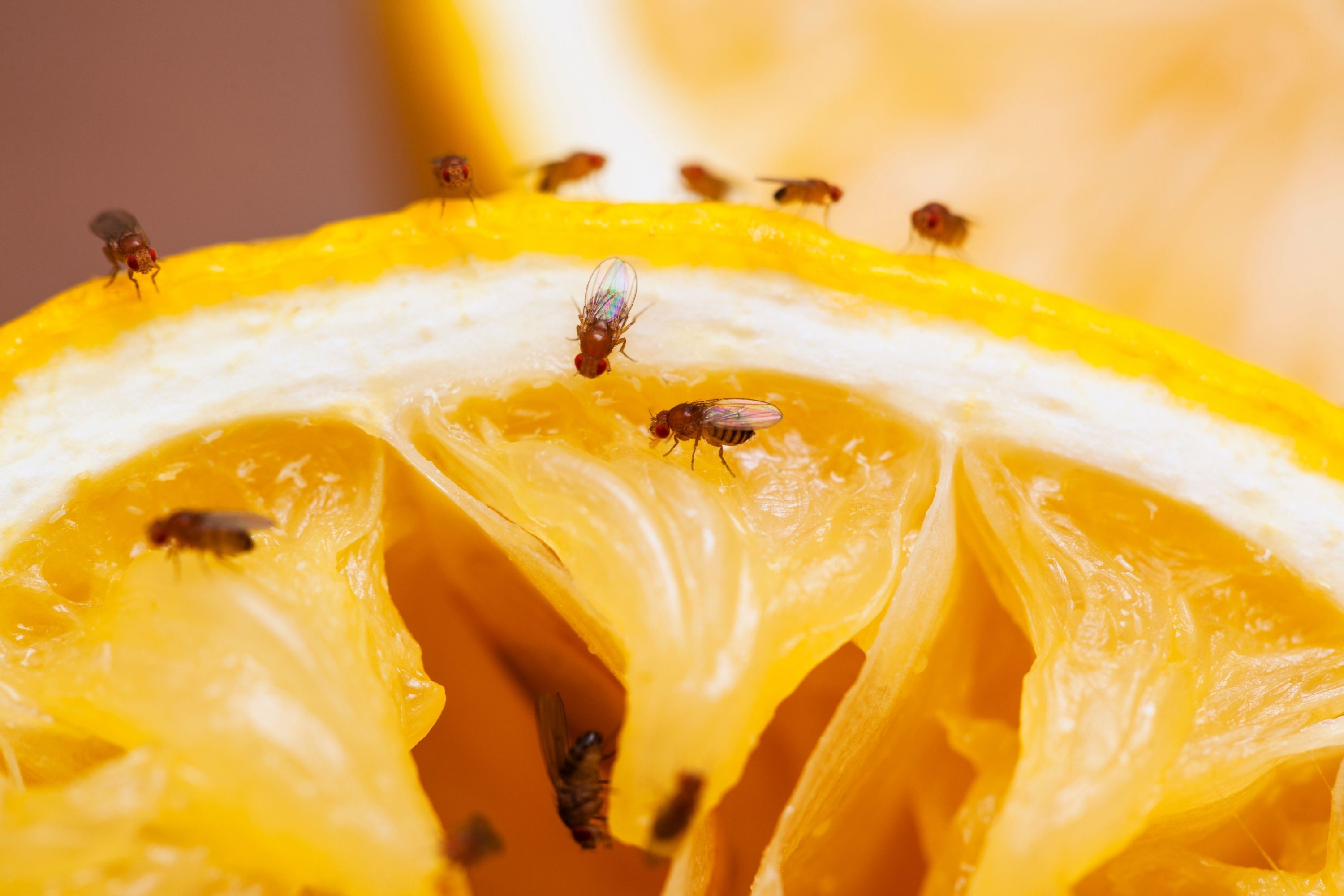
Cockroaches
These pests are among the most irritating and annoying ones. These small hard bugs of dark brown color can hide very well in cracks, crevices, and other hard-to-reach places in our homes. In addition, they can fly!
However, if you think cockroaches are always dark brown, you are wrong. The variety of their species possess different characteristics. For instance, the American cockroaches are reddish-brown with the size of three and a half inches in length.
The Oriental cockroach, on the other hand, is often colored dark brown to black. It is also smaller than its American “cousin” being only 2.8 inches long.
These pests feed on almost anything that we leave out at night. In addition, they are very hard to kill since they have an extremely hard and durable exoskeleton.
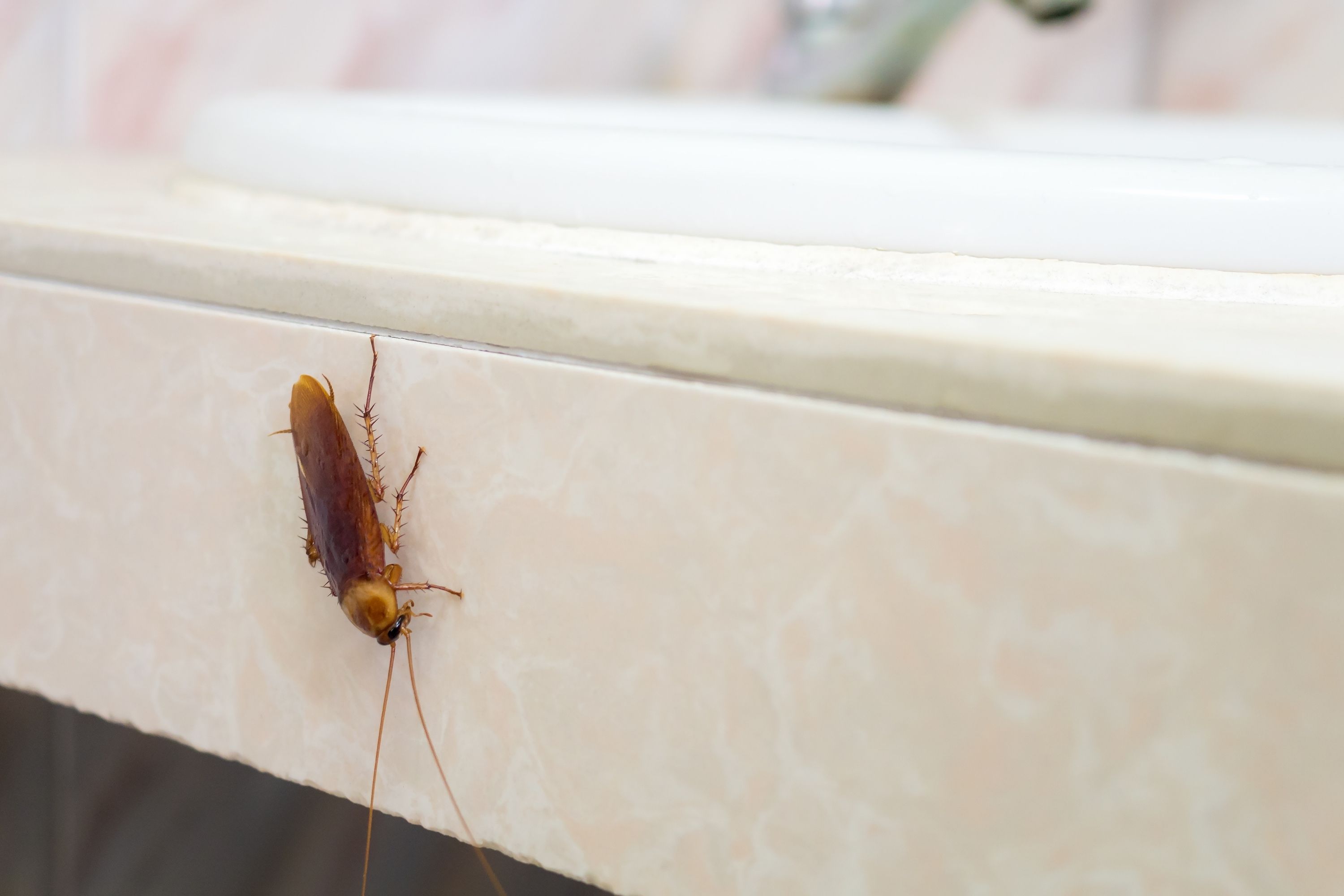
Fungus gnats
Have you ever noticed long black flying bugs that look almost like fruit flies only smaller? If you have, then those were definitely fungus gnats. They are long, black-colored, they fly and they have short bristle-like antennae.
The most preferred place of living for them is overwatered potted plants in our homes since these insects live off degrading organic material.
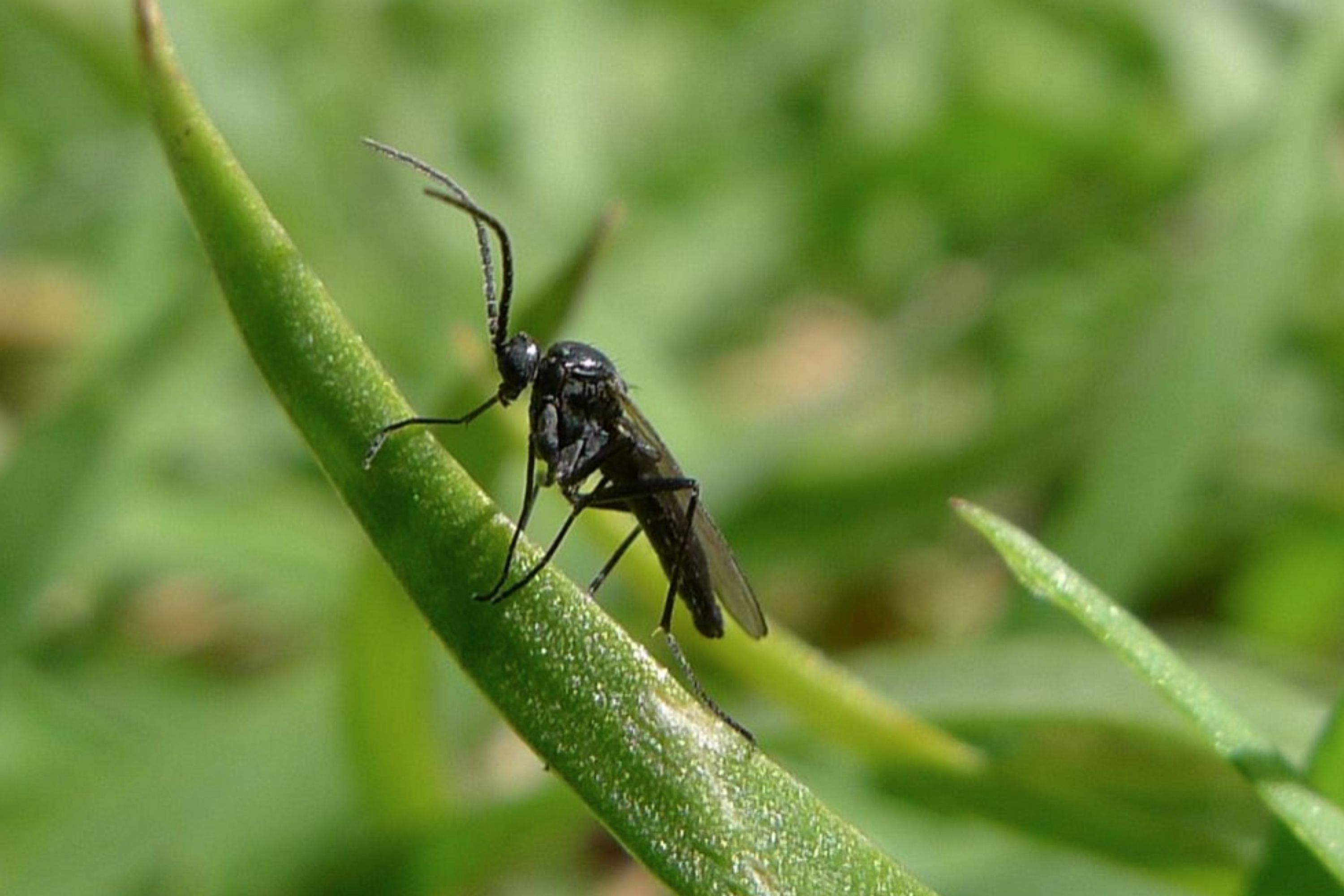
Pirate bug
Pirate bugs, even though considered pests, also bring certain use for us. They feed on larvae, eggs, and other small insects (for instance, aphids). So if you see small, three millimeters long bugs that have black and white wings in your house, know that those are pirate bugs.
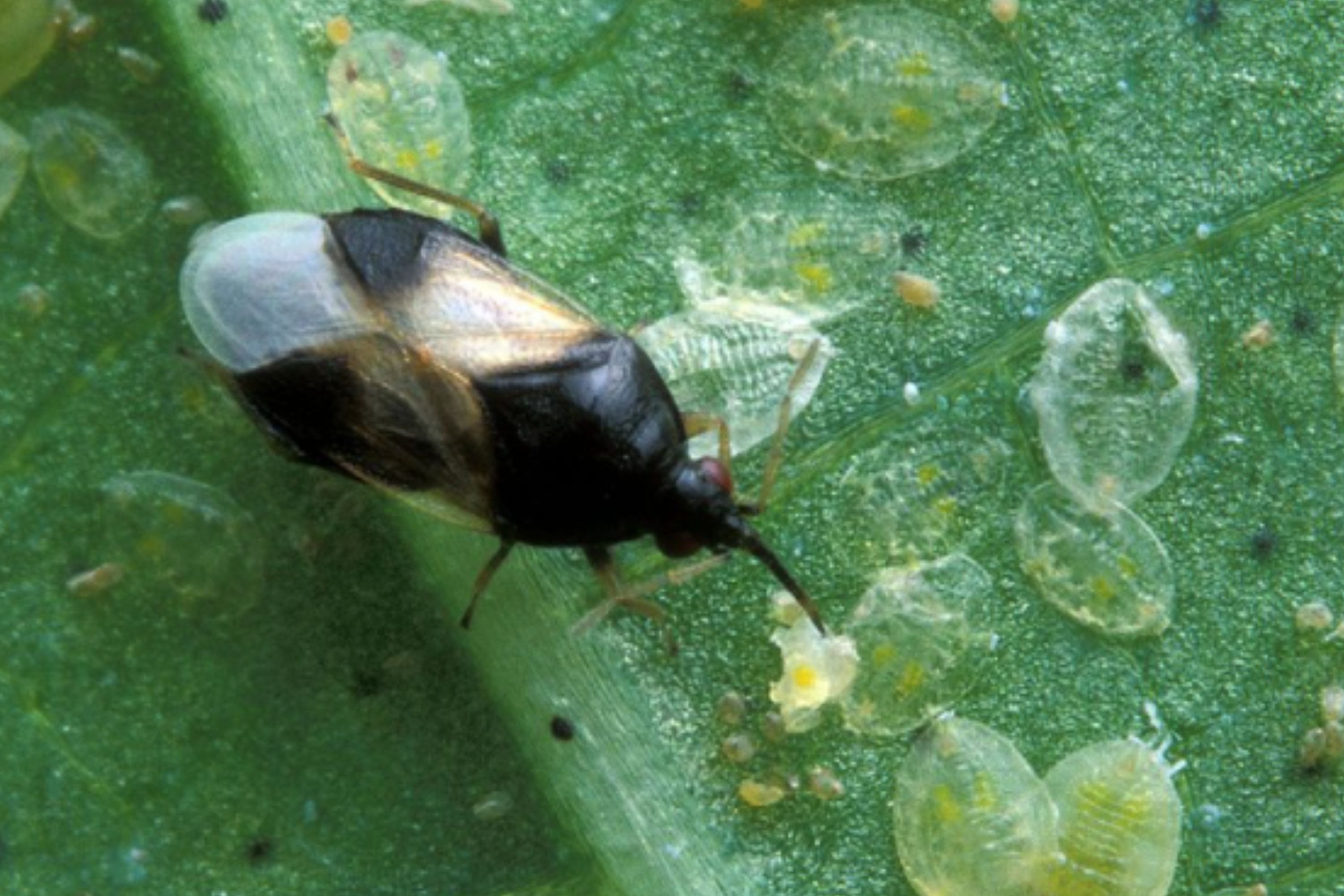
Larder beetle
What are these? Oh, you definitely met them at least once when opening your kitchen cabinets (we are sure you do open them from time to time)!
These small and black beetles that remind bugs dwell in our cupboards and pantries. And even though they look tiny and harmless being only a third of an inch long, they are extremely hazardous! These beetles are super destructive since they are able to bore through not only wood, but also through tin and lead!
You surely can imagine what it means for your home and why these pests must be got rid of immediately!
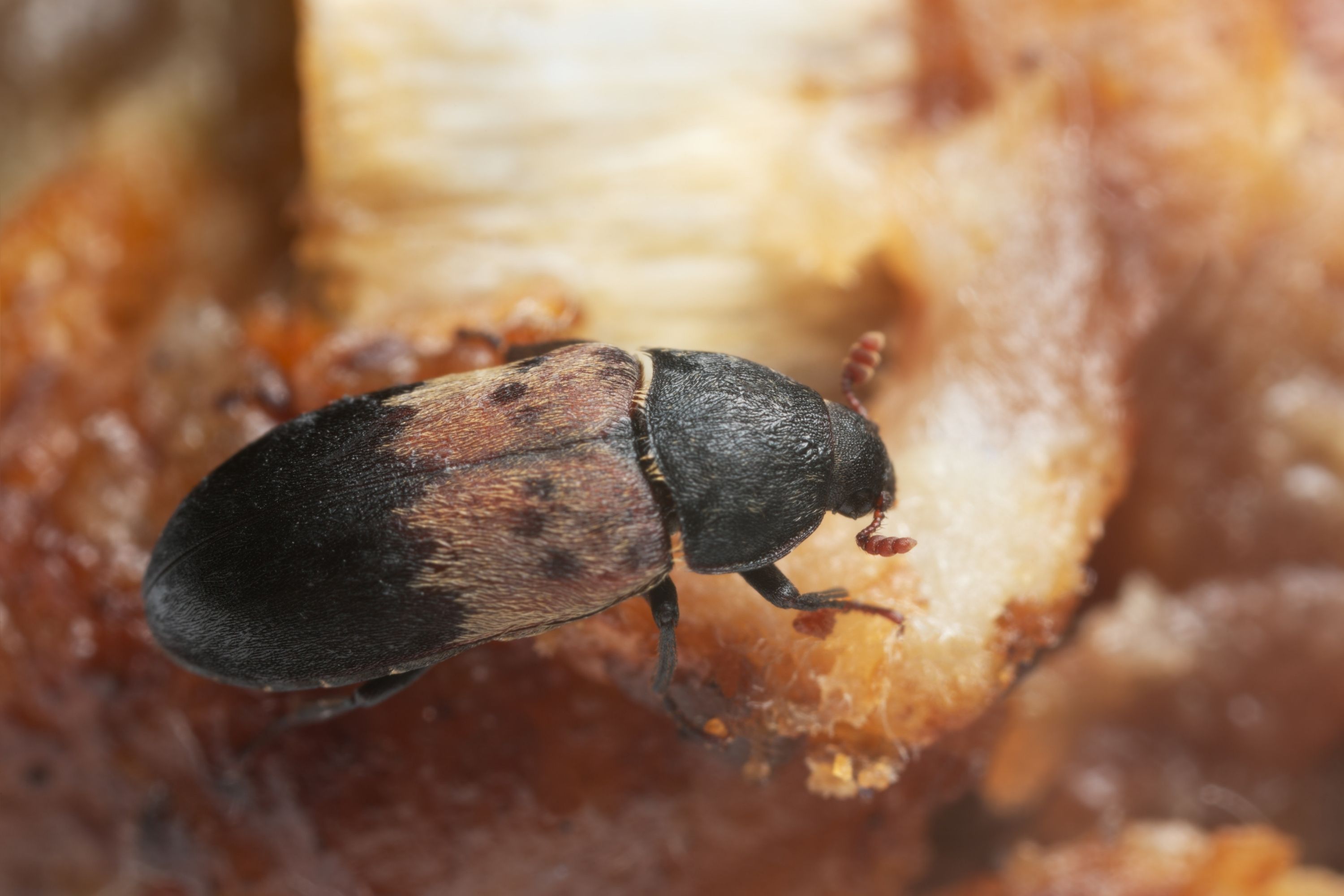
Weevils
These creatures can be very destructive on our flour and grains which may lead to your grocery bills growing. This is why it is recommended to store your pantry foods in the fridge during the summer season when weevils are extremely active.
See, when you place the foods into such a cold place as a fridge, the cold will easily kill the pests’ eggs and larvae if there are any already.
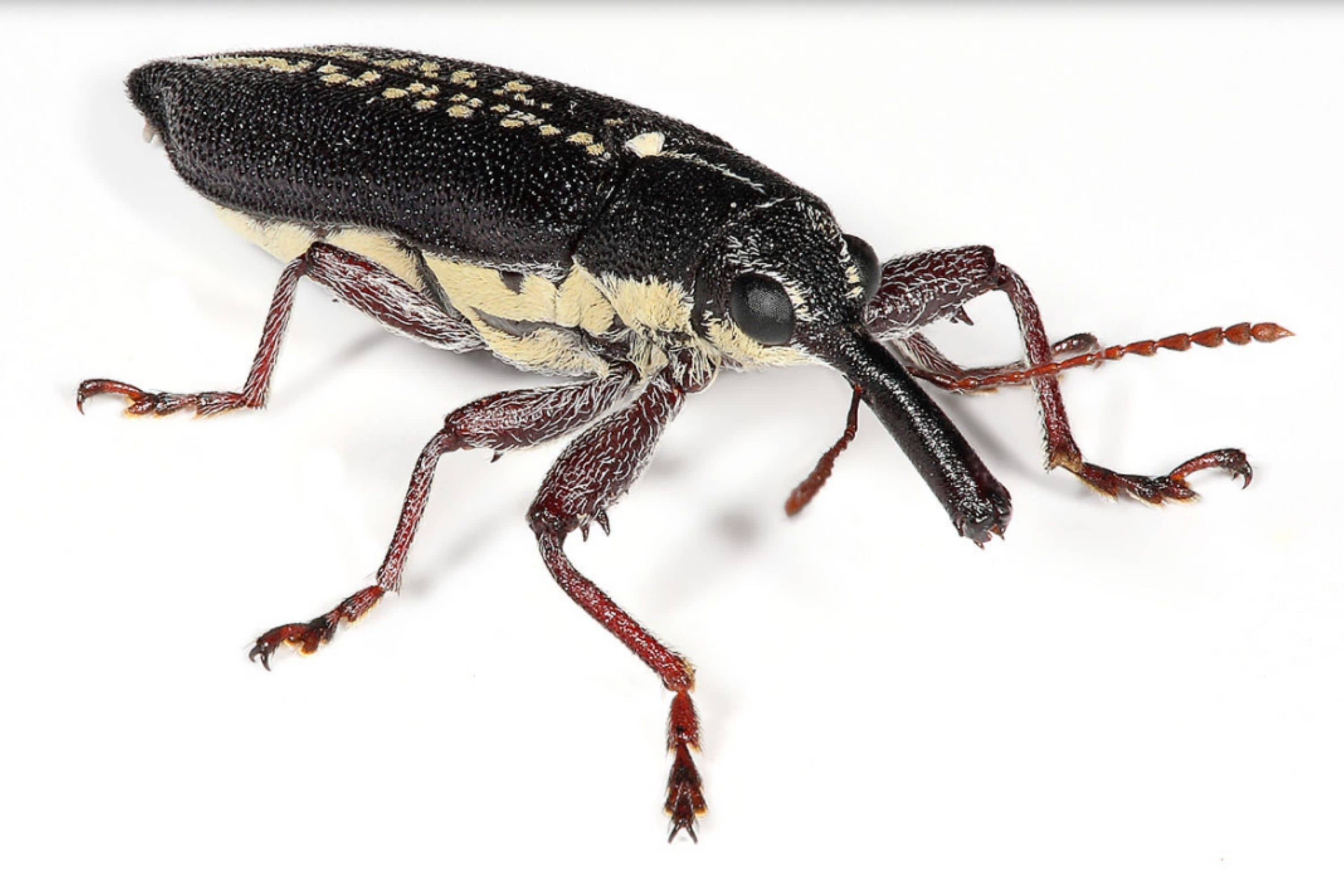
Ticks
Ticks usually do not infest our homes, but they do invade our gardens pretty often. Not saying about these critters to wait for their prey in the woods along the grassy paths.
Since they are really tiny, it is very hard to spot them among the grass or leaves, but the harm they can cause can sometimes be lethal!
And since ticks are rather hard to kill, it is best of all to protect yourself from being bitten by them and you should be careful about ticks’ nests also. Remember to wear long-sleeved clothes and long pants when walking outdoors, and especially in the woods, keep your garden clean of fallen leaves, and cut the bushes and grass to exclude the most possible hiding spots where ticks can be found.
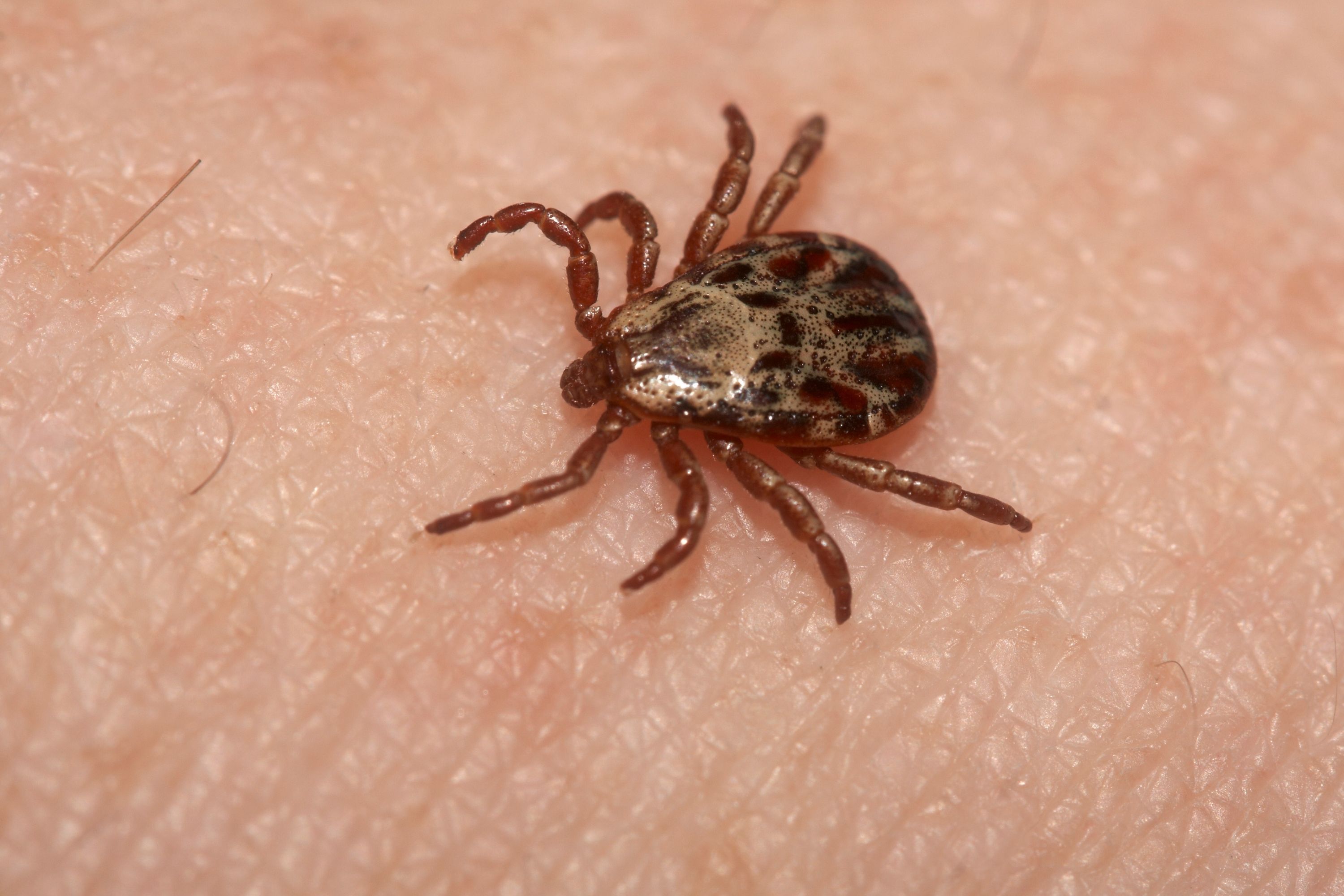
How to Get Rid Of Pests In Your Home
Finding pests in your house and figuring out what they are is only a half of business. The second half is destroying them once and for all. But since most of these critters are pretty hard to expel, we can’t do much but invite a professional exterminator and properly fumigate your home.
If you try to cast them off yourself, it can end up being way pricier first of all, and second, the process will most likely take way more time than you could even imagine.
Why is it so hard to get rid of those pests? Mostly because the majority of these bugs and beetles have an extremely hard exoskeleton that works as a protective shield of a superhero. Some of those bugs can’t even be squelched!
However, some kinds of pests can be dealt with on your own.
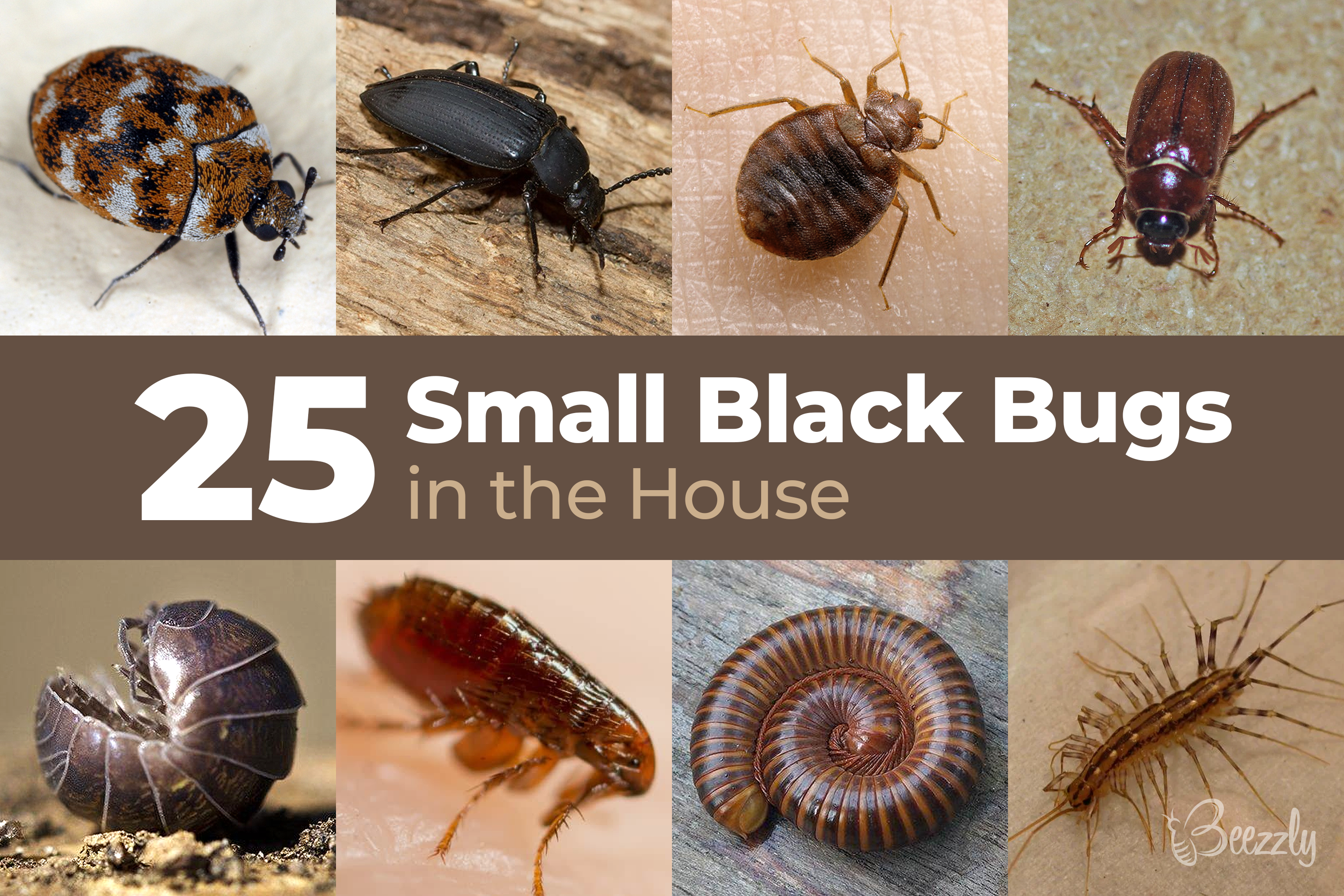
How to Destroy Fruit Flies
For instance, to expel fruit flies, find and remove the source of infestation. Then, clean the kitchen and pulverize the adult flies with a mixture of water and vinegar. But of course, if you have a full infestation with eggs and larvae, only a professional fumigation can help you out!
Getting Rid Of Larder Beetles
These can be quite easily expelled yourself. Start with taking all the food out of the pantry. Then throw it out and clean the area.
Then, treat all the cracks and crevices in your pantry with any household insecticide and insecticide powder that are designed for fighting beetles.
Well, this is actually all. You are now informed about the most common types of insect pests that can invade our homes and houses. You also have their most significant features and characteristics to make it easier to recognize the “enemy‘. And of course, being aware of what causes them to appear and what to do to deal with them will help you to clean your living space off these annoying critters.
Keep your home clean and tidy, and may all the pests bypass it!
[wp-faq-schema title=”Frequently Asked Questions”]
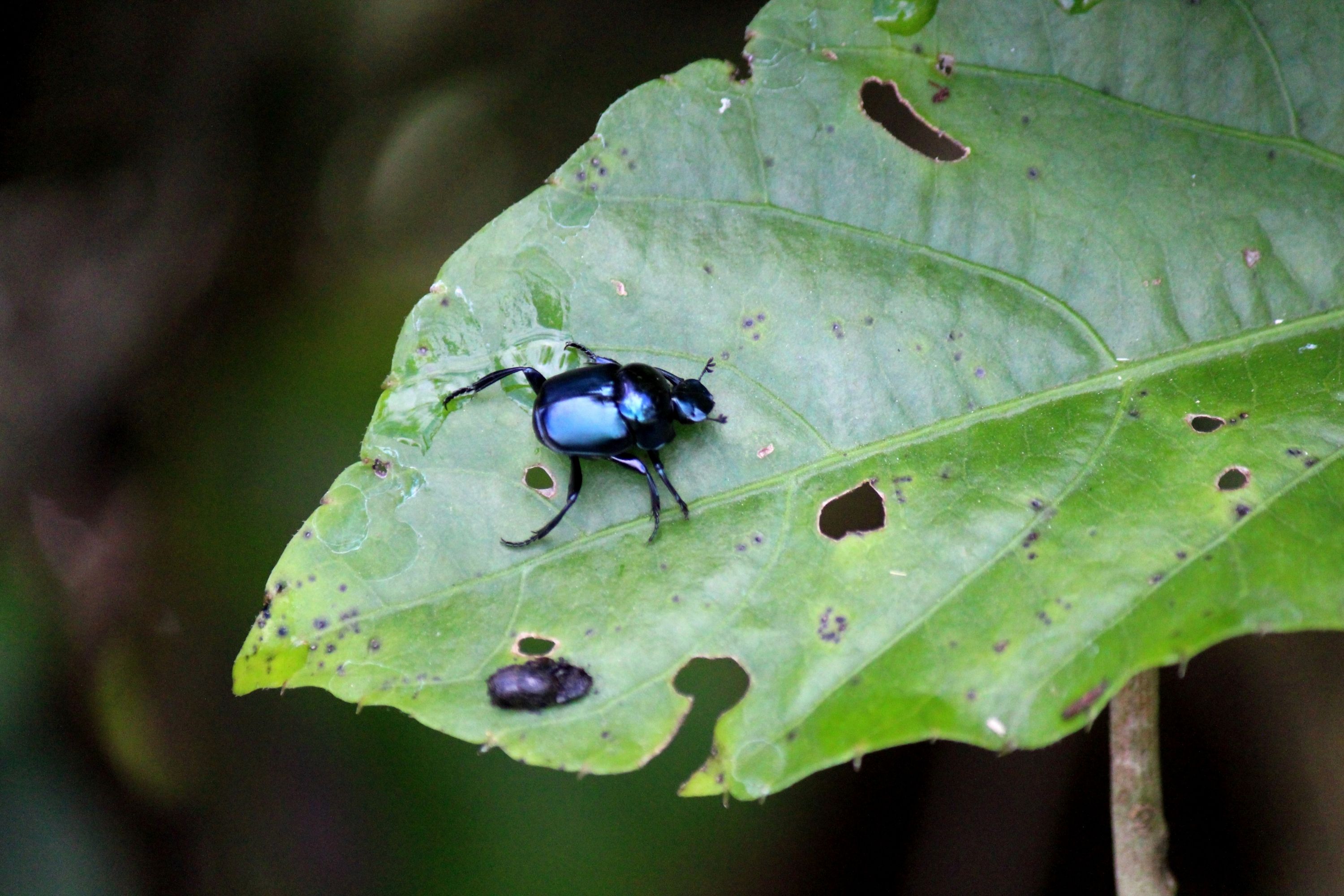
I have just noticed tiny insects crawling through my dog’s fur. What can they be? Are they something my doggo picked in the garden? Some sort of bugs?
Hello! I guess your pet has fleas. As far as I understand, you saw many of them so they are definitely not ticks. Try to bathe your dog with the anti-flea shampoo, and wash its bedding and the area where it sleeps with hot water. It will help to destroy the flea eggs and larvae.
We recently had Carpenter ants infestation in our house and now I wonder: is it still possible to treat wood after it? Any ideas folks?
Judging from my own experience with these ants, I’d say you should replace the damaged piece of wood with the new one that is treated. And better fumigate your house twice a year to prevent further infestation!
Just this morning I found a pin-prick size mite on my little dog When I went to take it off of him, it very quickly disappeared and I could not find it again. He was on my bed when I noticed it. Have you any idea what it could have been? I am convinced that whatever it was, was alive.
Hi Doreen, it could be a bed bug, it is a bit hard to tell you for sure, without seeing it. I would recommend you check carefully your dog, each time after a walk, since that could also be a tick, which your dog brought from walking in the street.
What are these small black things in my house? They look like moths or tiny bugs and presumably, they are not harmful (at least, I was never bitten). But what are they?
Hi! Well, those can be anything. E.g. some of the most common little black bugs that invade homes are ants, carpet beetles, weevils, flour beetles, pill bugs, and termites.
Why is there little black bugs around my house? They are surely not ants, but I can’t define what they are what’s most important, where they came from! Any suggestions?
Oh, those bugs can be anything. If they have wings, then most likely, you have gnats. Alternatively, the bugs may be phorid humpbacked flies. But if they’re gnats, be careful since some species can bite!
What bug looks like a tiny black speck? I find them mostly in and around my bathroom although it’s not too wet there.
Sounds more like booklice. They are soft and have two pairs of wings with long antennae. They tend to hop around and you may find these tiny dots appearing on wet and moist spaces including crawl spaces, books, tiles and basement.
Hi! I have a question related to small black bugs. Does anyone know what mites are black? I often find small black moths (or bugs?) on my windowsills, and I’m pretty sure they’re mites. But what exactly?
I’m pretty sure you have clover mites. They are very tiny (smaller than a pin head) and may occur in countless numbers. They usually appear first around windows, but later may overrun entire walls of a home. To most people they appear as tiny, moving, black specks.
Hi! Could anyone please help me? I have tiny black bugs that look like poppy seeds. Does anyone know what they could be? Are they harmful?
I guess they are moss mites. These are not dangerous to you or your home plants since they don’t attach healthy leaves. But they can attack diseased or dying leaves.
What are those tiny black bugs in house that are slow-moving? They don’t make any noise and they seem to be harmless. But what are they?